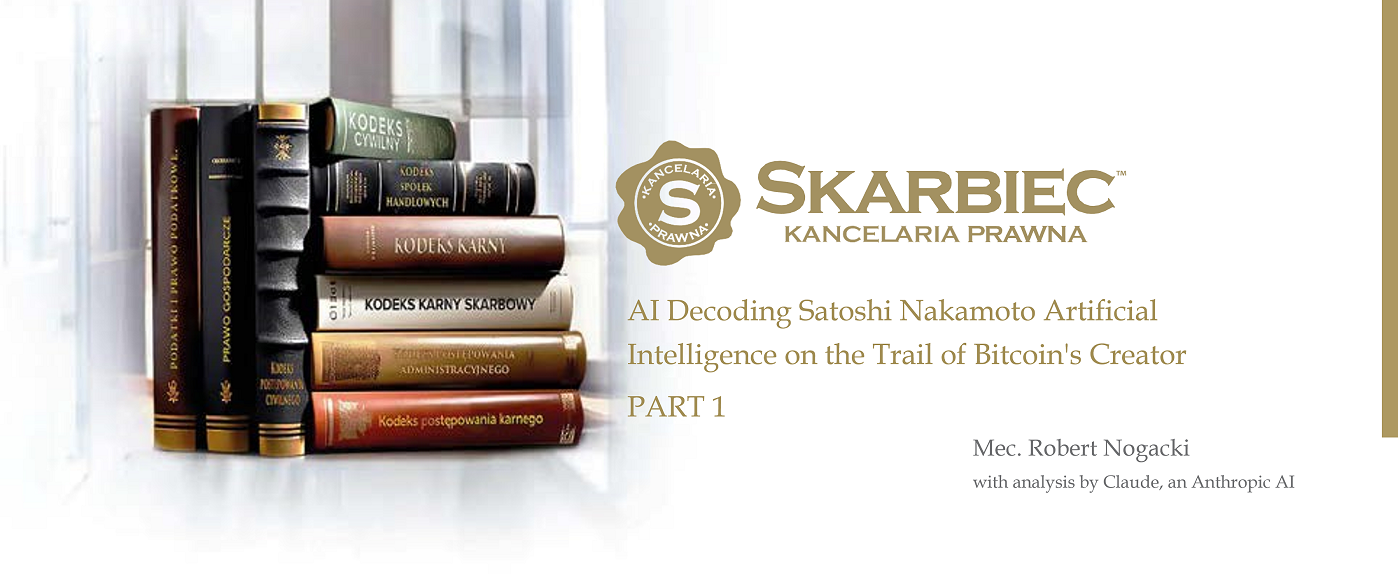
A Linguistic Analysis of the Bitcoin Whitepaper’s Authorship
Chapter 2
Our investigation begins with a fundamental question: Was Bitcoin’s seminal document the work of a single author, or did it emerge from a group effort? The question carries significant implications. Multiple authorship would support the theory that Bitcoin originated from a shadow organization—perhaps a state actor seeking to influence global finance through cryptocurrency. Such an origin would align with the resources of government agencies, so we must consider that professional authors could have been trained to eliminate identifying characteristics.
However, a detailed linguistic analysis reveals compelling evidence for single authorship. The whitepaper displays remarkable consistency across multiple dimensions that would be difficult to maintain with multiple authors, even under careful coordination.
Consider first the paper’s voice and tone. Throughout the document, we find a distinctive technical-yet-accessible style that remains remarkably consistent. The author employs first-person plural pronouns (“We propose”, “We need”, “We define”) systematically, maintaining a steady level of formality across all sections. This consistency extends beyond mere word choice to the underlying rhythm of the writing.
The structural architecture of the paper further supports single authorship. Each section follows an identical pattern: the author presents a problem, proposes a solution, then delves into technical details. This progression creates a predictable rhythm, moving from simple to complex concepts in a carefully orchestrated dance. The transitions between sections flow naturally, suggesting a single mind orchestrating the entire narrative.
The paper’s vocabulary and language patterns reveal another layer of consistency. Technical terms appear with precise definitions and are used consistently throughout, without redundant explanations. Sentence structures follow recurring patterns, while metaphors and analogies (such as the comparison to gold mining in Section 6) maintain a consistent style. These patterns create a linguistic fingerprint that remains stable throughout the document.
Perhaps most telling are the distinctive writing characteristics that emerge repeatedly. The author shows clear preferences in phrasing, particularly favoring certain conditional constructions (notably “as long as”). Mathematical concepts are presented with a consistent style, and new ideas are introduced following predictable patterns. These idiosyncrasies form a unique voice that persists throughout the text.
The paper’s argumentative style provides additional evidence of single authorship. Problems and solutions appear in a methodical sequence, maintaining consistent depth and detail in explanations. Counterarguments receive similar treatment throughout, suggesting a single strategic approach to addressing potential objections.
What emerges is a distinctive authorial voice that skillfully balances technical precision with accessibility. The writing maintains a delicate equilibrium between formal academic exposition and practical explanation, with examples and illustrations following consistent patterns. This balance would be exceptionally difficult for multiple authors to maintain without revealing stylistic seams.
One particularly compelling piece of evidence lies in how technical concepts build upon each other. Ideas flow with a natural progression that suggests a single mind with a comprehensive vision of the system. Each new concept connects to previously established ideas in a way that demonstrates unified understanding and purpose.
While the mathematical section (Section 11) shows slight stylistic variation, this difference likely stems from the inherent constraints of mathematical writing rather than indicating different authorship. The surrounding explanatory text maintains consistency with the document’s overall style, suggesting the same author operating within different technical constraints.
The integration of concepts throughout the paper provides final confirmation of single authorship. Ideas progress from basic to complex with remarkable coherence—a feat that would be difficult to achieve with multiple authors without revealing obvious transitions between different writing styles. The paper reads as a unified whole, suggesting a single author carefully crafting each element to serve the larger vision.
This cohesive analysis strongly suggests that the Bitcoin whitepaper emerged from a single mind rather than a committee or group effort. The consistency in technical explanation, argument structure, and language patterns throughout the document points to unified authorship rather than a carefully edited collaborative work. This conclusion carries significant implications for understanding Bitcoin’s origins and the nature of its creator.

Founder and Managing Partner of Skarbiec Law Firm, recognized by Dziennik Gazeta Prawna as one of the best tax advisory firms in Poland (2023, 2024). Legal advisor with 19 years of experience, serving Forbes-listed entrepreneurs and innovative start-ups. One of the most frequently quoted experts on commercial and tax law in the Polish media, regularly publishing in Rzeczpospolita, Gazeta Wyborcza, and Dziennik Gazeta Prawna. Author of the publication “AI Decoding Satoshi Nakamoto. Artificial Intelligence on the Trail of Bitcoin’s Creator” and co-author of the award-winning book “Bezpieczeństwo współczesnej firmy” (Security of a Modern Company). LinkedIn profile: 18 500 followers, 4 million views per year. Awards: 4-time winner of the European Medal, Golden Statuette of the Polish Business Leader, title of “International Tax Planning Law Firm of the Year in Poland.” He specializes in strategic legal consulting, tax planning, and crisis management for business.







